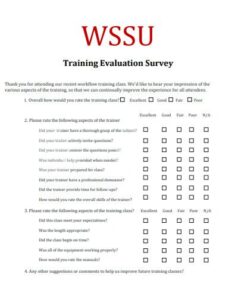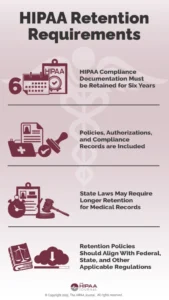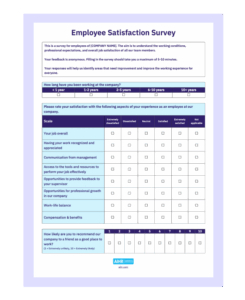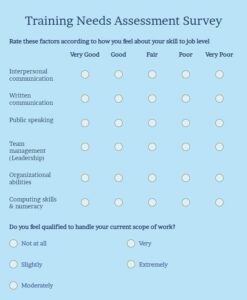In today’s fast-paced work environment, fostering continuous growth among employees isn’t just a nice-to-have; it’s a strategic imperative. Organizations that invest in their people’s development often see higher engagement, better retention, and stronger overall performance. But how do you truly know if your professional development initiatives are hitting the mark? This is where effective feedback becomes your most valuable tool.
Gathering structured feedback helps you understand what’s working, what’s not, and where future investments should be directed. It empowers you to refine your programs, ensuring they align perfectly with both individual career aspirations and organizational objectives. A well-designed professional development feedback survey template is precisely what you need to streamline this crucial process and capture actionable insights consistently.
Unlocking Growth Why a Professional Development Feedback Survey Template Matters
Think about all the time, effort, and resources that go into creating training sessions, workshops, mentorship programs, or e-learning modules. Without a robust system for collecting feedback, much of that investment could be suboptimal. A dedicated survey template ensures that you’re not just guessing about the impact of these initiatives; you’re gathering concrete data directly from the participants who experienced them firsthand. It turns assumptions into insights, paving the way for truly impactful development strategies.
For individual employees, providing feedback through a structured survey offers a valuable opportunity to reflect on their learning journey. It helps them articulate what they’ve gained, what challenges they still face, and what additional support they might need to fully apply their new skills. This reflective process in itself can reinforce learning and empower employees to take greater ownership of their career paths. It demonstrates that their voices are heard and valued, fostering a sense of psychological safety and contributing to a more supportive work culture.
From a managerial perspective, a professional development feedback survey template provides an invaluable bird’s-eye view of team capabilities and development needs. By analyzing aggregated feedback, managers can identify common skill gaps, assess the effectiveness of particular training programs, and pinpoint areas where customized support might be necessary for certain team members. This data-driven approach allows for more strategic allocation of resources, ensuring that development efforts are targeted precisely where they can yield the greatest return. It helps them build stronger, more competent teams.
Ultimately, for the organization as a whole, consistent use of a professional development feedback survey template leads to a culture of continuous improvement. It allows HR and L&D departments to demonstrate the ROI of their programs, justify future investments, and adapt quickly to evolving business needs. It ensures that every professional development opportunity offered is relevant, engaging, and directly contributes to the strategic goals of the company.
Key Benefits Youll See
The insights gleaned from these surveys enable a proactive approach to talent management, fostering an environment where growth isn’t just encouraged, but actively facilitated and continuously refined.
Building Your Effective Professional Development Feedback Survey Template
So, what makes a really effective professional development feedback survey template? It’s all about asking the right questions in a way that encourages honest and thoughtful responses. Your template should be comprehensive enough to capture a broad range of insights, yet concise enough to ensure a high completion rate. Think about the various aspects of professional development you want to evaluate, from the quality of the content to the overall experience and its applicability to daily work.
Start by considering the specific program or initiative the feedback relates to. Is it a one-off workshop, a long-term coaching engagement, or a self-paced online course? The context will dictate some of the questions. For instance, if it’s a workshop, you’ll want to ask about the facilitator, the materials, and the learning environment. If it’s a mentorship program, questions about the mentor-mentee relationship and perceived progress will be key.
Your template should ideally blend quantitative (rating scales, multiple choice) and qualitative (open-ended) questions. Quantitative questions provide measurable data that’s easy to analyze and track trends, while qualitative questions offer rich, nuanced insights that explain the "why" behind the numbers. This combination provides a complete picture, allowing you to not only see what happened but also understand the impact from the participant’s perspective.
Here are some crucial areas to cover in your survey:
Remember to keep the survey anonymous where possible to encourage candid feedback. Participants are more likely to share their true thoughts and feelings if they know their responses won’t be attributed directly to them. Also, provide clear instructions and set expectations about how the feedback will be used. This transparency builds trust and reinforces the idea that their input genuinely matters.
Once you’ve collected the feedback, the work isn’t over; it’s just beginning. The true value lies in analyzing the responses and taking action. Share aggregated insights with relevant stakeholders, identify areas for improvement, and implement changes to your professional development offerings. This iterative process of feedback, analysis, and adjustment ensures your programs continually evolve and deliver maximum impact, fostering a truly growth-oriented workplace for everyone.
Embracing a structured approach to gathering feedback on professional development initiatives is a cornerstone of organizational excellence. It moves beyond simply offering training to truly understanding its effectiveness and impact on individual and collective growth. By consistently soliciting and acting upon these valuable insights, you create a dynamic learning ecosystem that adapts to the evolving needs of your workforce and the market.
Investing in a well-designed feedback mechanism for your professional development efforts signals a commitment to your employees’ futures and the company’s long-term success. It empowers you to build a more skilled, engaged, and adaptable workforce, ensuring that every learning opportunity translates into tangible growth and contributes to a thriving, forward-thinking organization.



